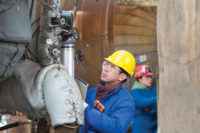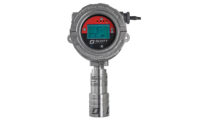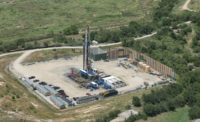Know your application
It may seem obvious, but truly consider the intended use of your equipment. Ask yourself, what are my needs?- If you are looking for a confined space entry meter, do you need a four-gas unit, or will a three-gas meter work?
- If it is a new sampling pump, what media will be used? Can the equipment handle the back-pressure from the media?
- Consider who will use the equipment. Do the employees need training? How will this be handled?
- What environment will the equipment be used in - contaminants and airborne concentrations?
Check for safety approvals
- What safety approvals will be required, based on the environments where the equipment will be used? For example, will equipment be used during spill response operations or for confined space entry?
Determine technical limitations
- Do you need data logging capabilities?
- What about battery life? (It should match your longest shift.)
- What recharge rate do you need? Can you wait 12 hours for a fully-charged battery?
- Is there software that can aid in report generation? Is it compatible with your PC and word processor?
- How often is the instrument upgraded? What about software upgrades?
Account for all costs
Your best value for an instrument can be determined only by taking all associated costs into consideration.- What is your budget for the initial cost of the instrument?
- Is there a cost associated with estimates for repair? If so, is it applied toward the repair costs?
- What are the costs for consumables, such as sensors and batteries?
- What are the associated costs of annual calibrations, if required?
Assess maintenance requirements
- What is the manufacturer's recommended calibration schedule?
- What other routine maintenance is required? Can this be done in-house, or must you ship it to the manufacturer? (Battery and sensor replacement are two operations you should be able to perform in your office.)
- Ask the manufacturer's rep for references. Ask current customers about factory service, turnaround times and battery life.
Resolve training issues
- Will your sales rep support training your employees, or must you provide the training yourself?
- If the sales rep provides the training, is it free?
Work with a demo
The answer to these questions will help you develop a purchasing specification. Once you have chosen two or three pieces of equipment that seem to fit your requirements, the evaluation phase starts.Once you have settled on a unit, ask the sales rep to demonstrate the instrument and get one to use in the office for a week or so to help answer these questions:
- Do you find the instrument easy to use and understand? How quickly did you catch on?
- Did the instrument perform the way you expected it to?
- Was it easy to calibrate?
- How was the data logging and associated software?
- Did the battery hold a charge?
- Are the accessories easy to use?
After taking these steps, don't be surprised if you can't find the instrument of your dreams. But you might avoid purchasing a piece of equipment that sits on the shelf because your field personnel don't like to use it.
Paul Watson, CIH, CET, is the industrial hygiene manager for Adirondack Environmental Services, Inc. Adirondack is a full-service environmental consulting firm and AIHA-accredited laboratory in Albany, N.Y.; (518) 580-1930.
Sidebar -
Resolving Indoor Air Problems
Say what you do, Do what you say, Prove it works No wonder the quality of the indoor air we breathe has become a significant issue - Americans spend 90 percent of their time indoors, according to the EPA. Here are five steps to ensure healthy indoor air and resolve problems:
1. Ensure efficient air handling
Get air in the right volume at the right temperature and humidity to the right place. Assure proper design and operation of the heating, ventilation and cooling system, using appropriate schedules, controls, distribution and filtration systems, monitors and alarms. Document HVAC system design and improvements, and HVAC inspection and maintenance records.
2. Prevent indoor pollution
Assess outdoor air intake, maintain adequate air filtration, and ensure appropriate handling of hazardous chemicals. Reduce or eliminate potential and actual IAQ problems from pollution sources - parking / delivery areas (vehicle exhaust), garbage receptacles, neighboring factories, refrigeration coils, and new construction. Use information on air quality in the outdoor environment and inspect pathways that outdoor air follows into your building. Document each action.
3. Communicate
Inform occupants regularly of actions taken in air handling and pollution prevention. Inform them routinely about potential IAQ problems before they occur. Publicize your procedure for dealing with IAQ complaints/issues. Remember, actions speak louder than mere words. Document all your communications for future reference.
4. Respond quickly to complaints
Investigate perceived IAQ problems according to the procedures outlined to your building occupants. Don't manage symptoms. Find and eliminate the cause(s) of the complaints. Don't assume that all IAQ-related health complaints are psychosomatic. Share IAQ complaints, responses and resolutions with occupants, making sure to protect individual confidentiality. This builds trust and verifies your track record for dealing responsibly with IAQ issues.
5. Test for pollutants
IAQ complaints may be related to chemical or biological contaminants. The nature of complaints will help determine the necessary testing. Testing is best conducted in consultation with an IAQ specialist. Require the specialist to provide complete and understandable documentation of all activities, data, conclusions, and recommendations.
By Timothy McCormick, Michael Pinto, and Robert Arbogast, Wonder Makers Environmental, Kalamazoo, MI (888) 382-4154.


